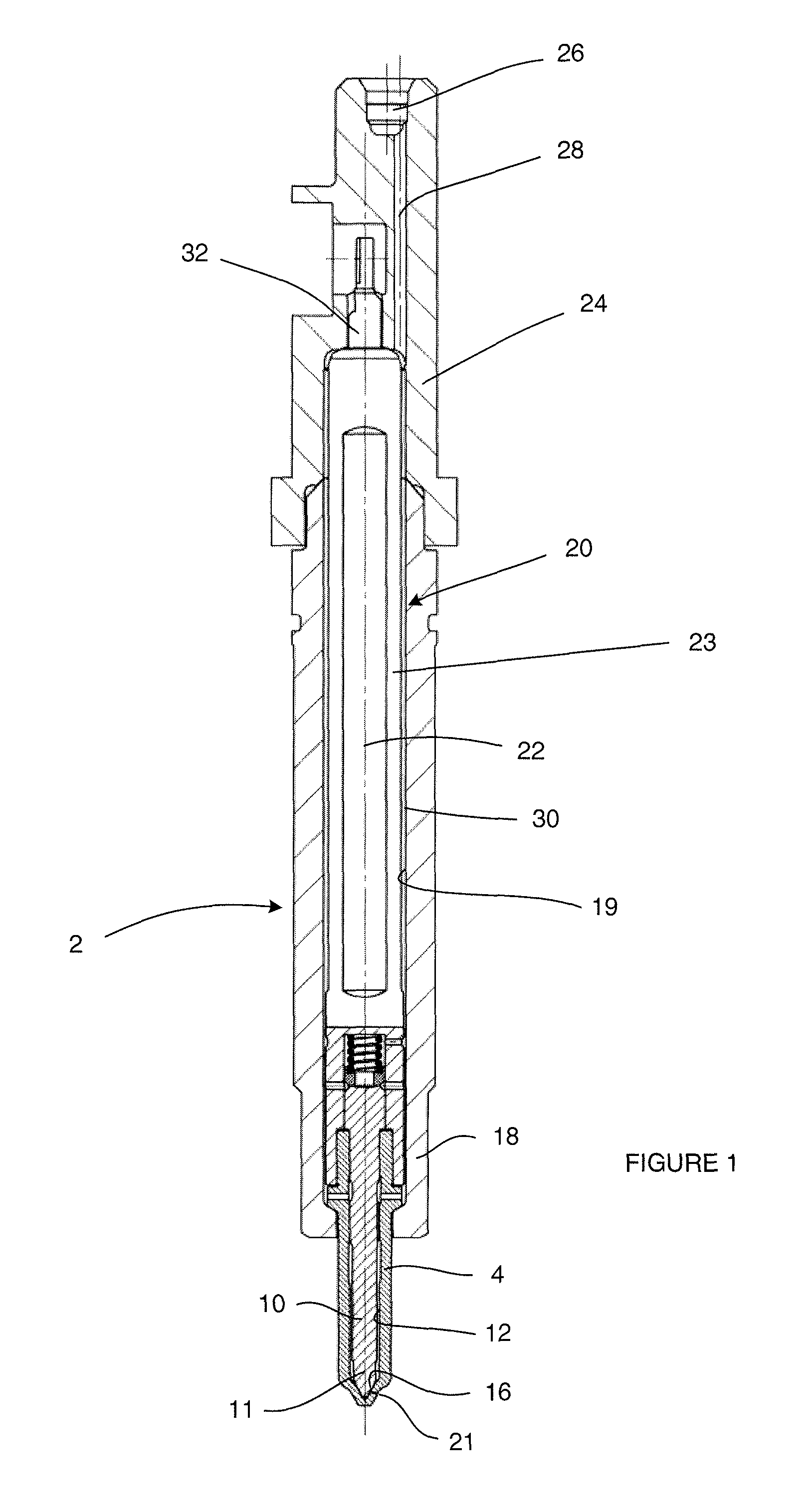Fuel injector and operating method therefor
a fuel injector and fuel technology, applied in the direction of piezoelectric/magnetostrictive element fuel injection, spray nozzles, movable spraying apparatus, etc., can solve the problems of reducing the effective operational lifespan, de-energising the injector system, and a large percentage of its operating life, etc., to achieve large actuator displacement, reduce one, and large differential voltage change
- Summary
- Abstract
- Description
- Claims
- Application Information
AI Technical Summary
Benefits of technology
Problems solved by technology
Method used
Image
Examples
Embodiment Construction
[0076]Before describing the specific embodiments of the invention as set forth in the figures, the following definitions are provided.
[0077]As used herein, it will be understood that by the term “nozzle outlets” it is meant the holes (or apertures) through which fuel is injected from the injection nozzle of the fuel injector and into an associated engine cylinder (in use), which may also be referred to as injection holes, spray holes or similar terms known in the art. By “a set of nozzle outlets” it is meant the one or more nozzle outlets through which fuel is injected when a particular valve needle is disengaged from its associated valve needle seat (or seating region). Thus, in the context of this invention, a valve needle is typically associated with a seating region and an associated “set” of nozzle outlets. It is possible for a valve needle to have more than one associated seating region (e.g. two). In such a case, each seating region is associated with a set of nozzle outlets ...
PUM
 Login to View More
Login to View More Abstract
Description
Claims
Application Information
 Login to View More
Login to View More - R&D
- Intellectual Property
- Life Sciences
- Materials
- Tech Scout
- Unparalleled Data Quality
- Higher Quality Content
- 60% Fewer Hallucinations
Browse by: Latest US Patents, China's latest patents, Technical Efficacy Thesaurus, Application Domain, Technology Topic, Popular Technical Reports.
© 2025 PatSnap. All rights reserved.Legal|Privacy policy|Modern Slavery Act Transparency Statement|Sitemap|About US| Contact US: help@patsnap.com



